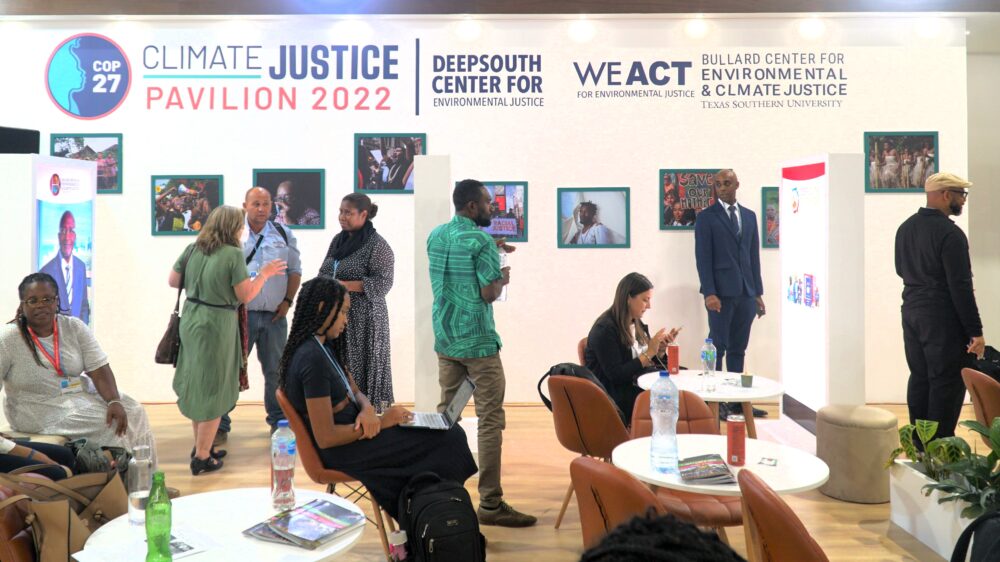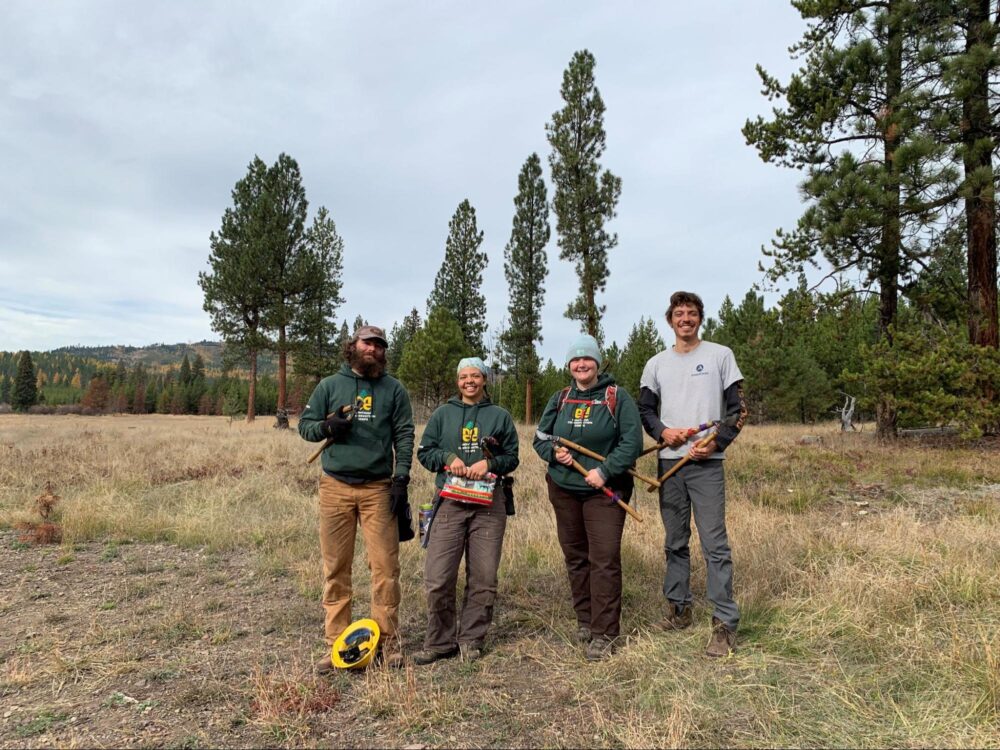We have much more to do and your continued support is needed now more than ever.
Creating a Buyer’s Market for Renewable Energy
Creating and consuming renewable energy in the United States is gaining popularity and financial support because communities, colleges and universities are increasing their demand for clean, sustainable energy. College students all across the country have been voting to increase their semester fees in order to purchase more renewable energy for their campuses, and universities are using their buying power to demand more clean fuels from their utility suppliers. Some schools are even beginning to produce their own green energy on-site.
Renewable energy has been finding its way onto campuses during the last decade primarily through Renewable Energy Certificates (RECs) purchases. A green energy provider, such as a wind farm, is credited with one REC for every one mega-watt of renewable energy it produces. The actual produced energy can then be sold to one customer and the REC for that energy can be sold to a different customer; once the energy hits the grid, it doesn’t make much of a difference where it goes. RECs can continue to be sold and traded by the purchaser, but in order for an organization to claim them as “offsets” to its greenhouse gas emissions, it must “retire” those RECs, which essentially takes them off the market after they’ve been purchased.
RECs are accessible alternatives to on-site green energy production for several reasons. RECs are easily available, even if actual renewable energy is not. According to the EPA, only a little more than half of U.S. electricity customers have the option to purchase some type of green energy product from a retail electricity provider. Buying RECs is far cheaper than building a new renewable energy generator (wind turbine, geothermal heater/cooler, etc.), and purchasing them can help states meet their Renewable Portfolio Standards, which exist in 24 states and the District of Columbia. The use of RECs can also raise positive awareness on campus that then leads to exploring other means for securing, increasing or even producing renewable energy.
Currently, more than 32 percent of colleges and universities use off-campus renewable energy sources to meet some portion of their electricity, heating and cooling needs. According to the same report, 36 percent of schools have plans to generate more renewable energy on campus.
“We made our first purchase of renewable wind energy from Community Energy in 2001,” explains Daniel Garofalo, University of Pennsylvania’s (Penn) recently-appointed and first environmental and sustainability coordinator, “and it was funded through conservation initiatives on campus.” Penn used the money it saved by changing how it managed its energy use to purchase its first RECs. One of the changes the school made to help finance the project included altering thermostat set points, making buildings cooler in the winter and warmer in the summer.
Several voluntary programs exist to support the procurement of green power. One of these is the EPA’s Green Power Partnership program, which assists more than 85 higher education institutions with buying green energy. The schools on the EPA’s Top 10 College & University Partners list alone purchase more than 758,000 megawatt-hours of green energy annually, which is equivalent to the amount of electricity needed to power over 78,000 average American homes for one year.
The #1 spot went to Penn, buying 192,727 megawatt-hours of green energy. And though all Top 10 schools use wind energy as part of their green energy resources, six of the ten schools use it exclusively, including Penn.
The fact that Penn has only switched 45 percent of its energy use to green energy, yet still purchases more renewable energy than any other campus in the country, means there’s room to improve its energy efficiency. Penn sits on a 280-acre campus, employs 25,000 people and spends about $30 million a year for its electricity. One of Penn’s challenges has been encouraging behavioral changes in staff members’ use of energy in their buildings. “It’s easier to do the technical thing than the human thing,” admits Garofalo. In an effort to further address its environmental impact, Penn has a Climate Change Action Plan due in September 2009.
On a larger scale, an encouraging trend is beginning to appear in the United States: renewable energy accounted for more than 10 percent of the domestically-produced energy used in the first half of 2008. In a report released late September by the U.S. Energy Information Administration, the United States consumed 50.673 quadrillion Btus (quads) of energy from January 1 – June 30, 2008, of which 34.162 quads were from domestic sources. A further breakdown of those domestic sources reveals that 3.606 quads (10.56 percent) came from renewable energy production (wind, solar, hydropower, geothermal and biomass/biofuels).
While biomass and biofuels constituted the largest source of U.S. renewable energy (1.883 quads), it was wind power that experienced the largest growth rate over the previous year, increasing by nearly 49 percent from the first half of 2007 (0.244 quads, up from 0.164 quads). Solar and geothermal energy levels were roughly the same as they were in 2007.
The drastic increase in wind energy use comes at a time when discussions about biofuels and their cost and practicality are heating up. A recent National Geographic article points out that “producing corn ethanol consumes just about as much fossil fuel as the ethanol itself replaces,” and that ethanol “delivers 30 percent fewer miles a gallon than gasoline.”
Wind energy, on the other hand, strives to be one of the cleanest viable options for renewable energy, at least when it comes to producing electricity. According to the American Wind Energy Association (AWEA), “to generate the same amount of electricity as a single 1.5-MW wind turbine using either fossil fuels or nuclear technology requires, on average, use of roughly 90 million gallons of water a year for cooling purposes, of which nearly 1.5 million gallons is lost to evaporation.”
In 2000, the University of Colorado-Boulder was the first university in the nation to buy wind energy credits, and it did so to offset the electricity used in three buildings on campus. Students voted to pay $1 per semester ($50,000 year) to help fund wind energy; by 2002, those wind energy dollars helped double the number of wind turbines at Xcel Energy’s Ponnequin wind farm in northern Colorado. On a statewide level, from 2000-2007 Colorado increased production from 20 megawatts of wind energy a year to almost 300 megawatts. And according to the AWEA, one megawatt of wind energy is sufficient to power about 600 homes.
Although CU-Boulder has stopped buying RECs for those three buildings, it has shifted its focus to purchasing carbon offsets through the Colorado Carbon Fund to offset its overall energy use. “The difference between RECs and carbon offsets,” explains Rob Hall, CU-Boulder’s Environmental Center energy program manager, “is that when you buy a REC you’re buying energy that already exists. With carbon offsets, you’re investing in renewable energy that won’t exist until it has been funded.”
The Environmental Center at CU-Boulder is the largest student-run, student-funded environmental center in the country, employing over 100 staff. Started back in 1970, the Center manages all campus recycling, transportation and renewable energy efforts, and it oversees many other sustainability initiatives.
No stranger to being the first to try something new, CU-Boulder has other plans up it proverbial sleeve. “We are looking into one option,” explains Dave Newport, executive director for the Center, “and that is building a consortium of six Colorado schools to buy our own wind farm, but we’re only in the planning stages right now.”
Another school that can lay claim to being a “first” in renewable energy advancement on campus is the University of Minnesota-Morris (UMM). On March 7, 2005, UMM began operating the first large-scale wind turbine at a U.S. public university. Located near the campus at the University of Minnesota’s West Central Research and Outreach Center (WCROC), the 1.65 megawatt turbine produces about 5,600 megawatt-hours of renewable energy each year, which is 60 percent of UMM’s electricity needs.
UMM’s chancellor, Jacqueline Johnson, was one of three university leaders to testify in April 2008 before the U.S. Senate during a hearing entitled “Examining Strategies to Reduce Greenhouse Gas Emissions at U.S. Colleges and Universities.”
“Part of what we’re trying to communicate is ‘use what you have,'” explains Troy Goodnough, UMM’s campus sustainability coordinator. “We used what we had and that was a big step for us. We do have biomass and we do have wind.”
In October 2008, UMM was given the first American Council on Renewable Energy’s (ACORE) Campus Excellence Award for Outstanding Use of Renewable Energy. The award was presented to UMM during a dedication ceremony for its new biomass gasification facility, a first-of-its kind, which will provide 80 percent of the campus’s heating and cooling needs.
UMM also recently received three Clean Renewable Energy Bonds (CREBs) to fund three new renewable energy projects: building a second on-site wind turbine, adding a steam turbine to create electricity from steam produced at the biomass facility and building a third wind turbine in western Minnesota that will be shared with the Mille Lacs Band of Ojibwe. CREBs are essentially interest-free loans made available through the Energy Policy Act of 2005 for financing qualified energy projects.
“With all these systems in place,” explains Joel Tallaksen, WCROC’s researcher for the UMM biomass project, “the school will very likely be entirely carbon-neutral, if not carbon-negative.” Any extra energy UMM produces can be put back on the local energy grid.
As more schools begin looking into on-site renewable energy options, RECs may be the readily available first step toward a cleaner campus. “UMM did buy some green electricity from our power provider for a student center, prior to all this,” says Goodnough, “but I think since we started producing such a large fraction of our own power we’re not doing that anymore.”
See More:
Budgeting for Climate Neutrality, Colleges Consider Energy Credits: The Chronicle of Higher Education
Higher Education in a Warming World: The Business Case for Renewable Energy: Campus Ecology
Universities Lead the Charge to Mine the Heat Beneath our Feet: ClimateEdu




















